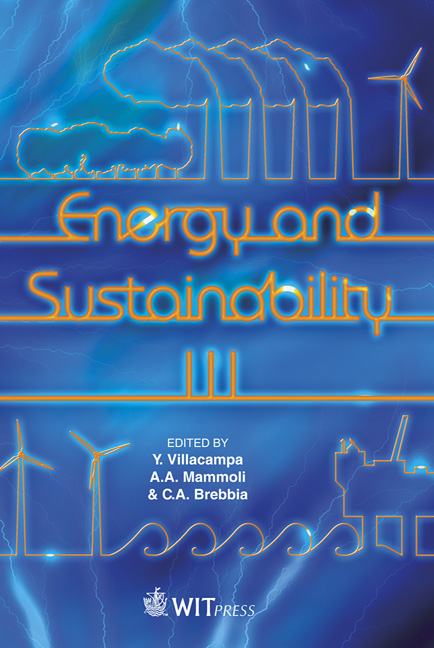Embodied Energy Analysis Of Multi Storied Residential Buildings In Urban India
Price
Free (open access)
Transaction
Volume
143
Pages
11
Page Range
411 - 421
Published
2011
Size
356 kb
Paper DOI
10.2495/ESUS110351
Copyright
WIT Press
Author(s)
S. Bardhan
Abstract
Today developing nations are witnessing an unprecedented pace of urbanization in the wake of industrialization and globalization. This is giving rise to an ever increasing demand for housing and infrastructure to support the growing population and its activities. Energy is the single-most significant driver of this urban development and buildings stand as the most visible expressions of this development. However, buildings are known to be highly energy intensive and considering energy supply from conventional sources, these buildings have substantial negative environmental impacts. While operational energy of buildings have been mapped and assessed for different building typologies and various climatic zones, the embodied energy captive in the building fabric has received relatively lesser attention. Thus, efforts towards energy management and conservation in building operations have sufficiently addressed the concerns and have been reflected in the many building-rating systems prevailing across the world, though there had been limited research in the field of embodied energy measurement of contemporary multi-storied residential buildings constructed with modern technology. This assumes more significance in view of today’s energy constrained world where exhaustive database on energy expended through all possible avenues need to be recorded in order to optimize and regulate this capital energy component of the building industry. In this backdrop, the present paper discusses the process and results of embodied energy analysis of one such typical multi-storied residential apartment of steel reinforced concrete construction in the metropolitan city of Calcutta (now Kolkata) in India and compares it with reported findings of some similar researches in Japan and India. Keywords: urban buildings, embodied energy, construction materials
Keywords
urban buildings, embodied energy, construction materials





